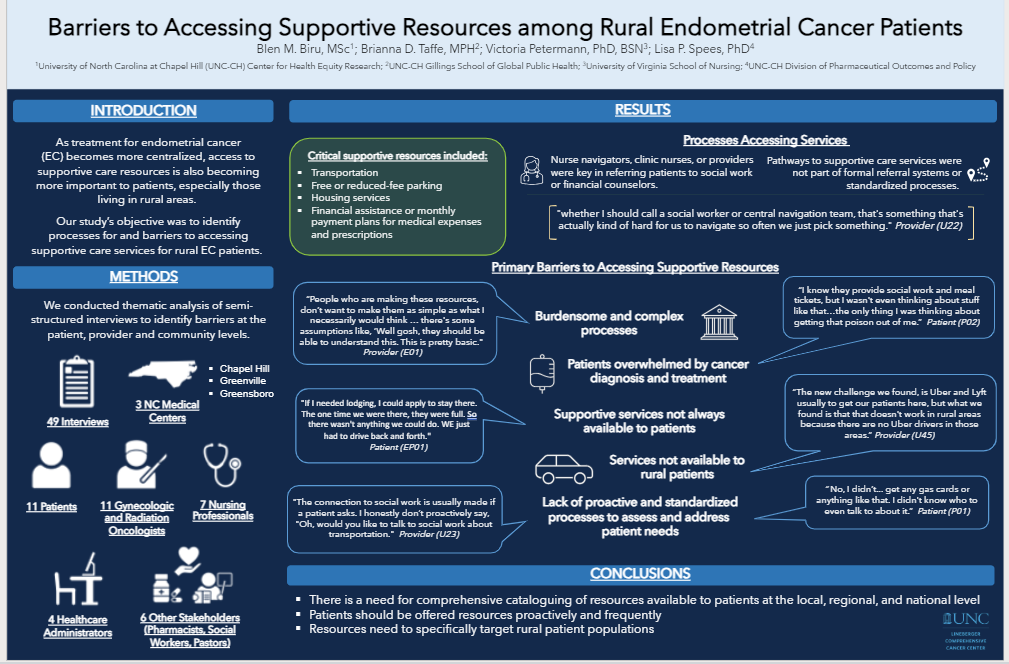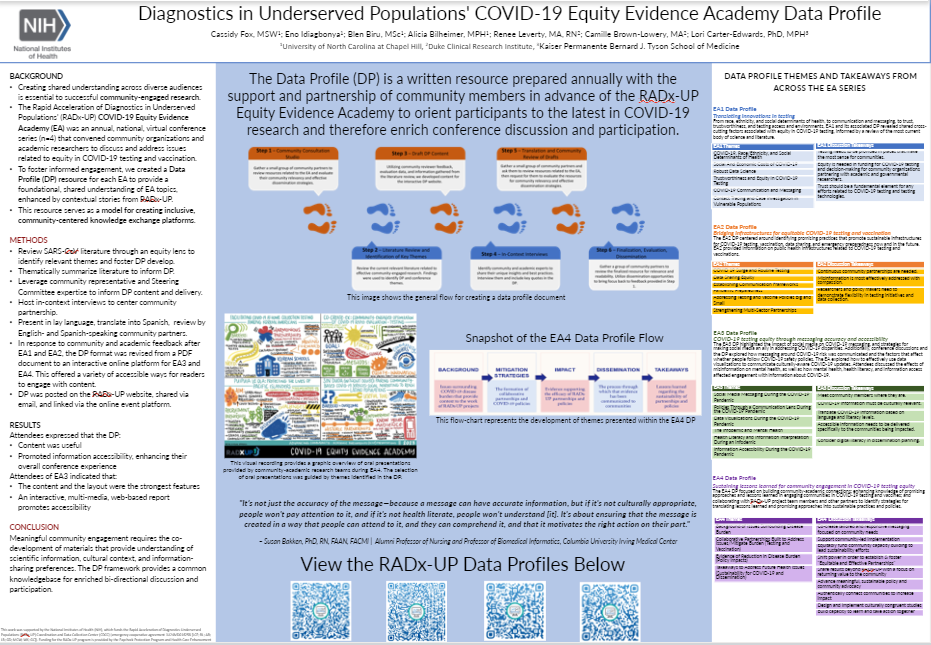by Abby Arcuri
A core part of CHER is sharing our research. Recently, Blen Biru, a research project manager, got to do so.
Learn about Biru’s experience at The MaryAnn Black Distinguished Health Equity Symposium, and the research she shared with attendees.
In February, Biru presented at this conference. With not just one but two poster presentations, Biru shared all of the research she has been working on.
On one of the projects, Biru is the first author. She worked with Lisa Spees, who is in the Division of Pharmaceutical Outcomes and Policy in the Eshelman School of Pharmacy at UNC. This project highlights how endometrial cancer treatment is a challenging experience, and how those in rural areas have even more difficulties.
While cancer is always challenging, sometimes the biggest issues come from systems we can change. For example, Biru and Spees found that the numerous requests and lack of standardized processes led to these issues.

Biru was a co-author with the Rapid Acceleration of Diagnostics in Underserved Populations (RADx-UP) Evidence Academy team on the other poster. This research looked into the importance of reading pre-conference material before attending. Together, the researchers found that pre-conference reading material builds a foundation that prepares attendees for the conference.
With this foundation, participants can “fully engage in a conference and serve as a model for creating inclusive, community-centered knowledge exchange platforms.”

At the conference, Biru says the panel discussion at the conference stuck the most. There were speakers ranging from local to federal levels who spoke about addressing health disparities.
Biru also enjoyed presenting her posters, engaging in the conference and connecting with other professionals. Additionally, Biru said it was wonderful learning about MaryAnn Black’s legacy in working with communities.
Having this chance to spread CHER’s research so broadly is amazing, and we are happy to bring what we’ve found to conferences like one.
